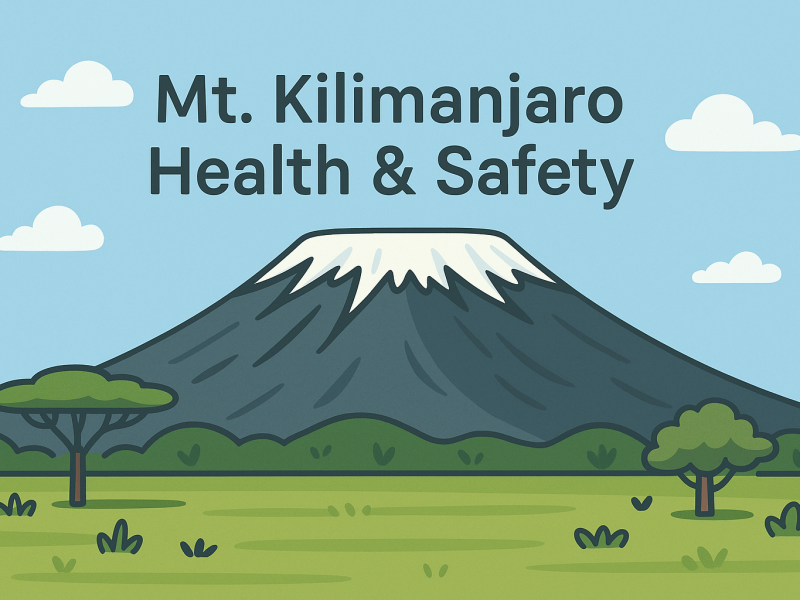Ensuring a Safe and Successful Climb
Embarking on a journey to climb Mount Kilimanjaro is an exciting and rewarding decision. However, to make the most of this unforgettable adventure, it’s essential to be well-prepared and aware of key health and safety considerations.
The trek to Africa’s highest peak can present various challenges particularly those related to high altitude and rapidly changing weather conditions. With proper planning, the right gear, and an understanding of how to protect your health, you can significantly increase your chances of a successful and safe summit.
Common Health and Safety Challenges
Altitude Sickness
As elevation increases, air pressure and oxygen levels decrease. The body needs time to adjust, and ascending too quickly can lead to altitude sickness.
Symptoms: Headache, nausea, fatigue, dizziness, shortness of breath.
Prevention Tips:
• Ascend slowly and allow time for acclimatization
• Follow the “climb high, sleep low” principle
• Stay well-hydrated
• Listen to your guide and know when to rest or descend
Dehydration
Higher altitudes lead to faster fluid loss through breathing and sweating. If not addressed, dehydration can worsen altitude-related symptoms.
Tip: Drink water consistently, even if you don’t feel thirsty.
Hypothermia
Mountain temperatures can drop drastically, especially at night. Inadequate clothing or wet gear can result in dangerously low body temperatures.
Prevention:
• Layer your clothing properly (base, insulation, and waterproof layers)
• Keep dry and change out of damp clothes promptly
Sunburn
UV exposure increases with altitude. The sun’s rays are stronger and more direct, putting your skin and eyes at risk.
Protection Tips:
• Use SPF 30+ sunscreen
• Wear a wide-brimmed hat
• Use UV-blocking sunglasses with side protection
Foot Problems
Ill-fitting or new boots can lead to blisters, sore feet, and discomfort.
Recommendations:
• Break in your boots well before your climb
• Keep toenails trimmed
• Treat hot spots or blisters immediately with zinc oxide tape or blister plasters
Helpful Safety Tips for Your Climb
• Choose the best time of year to climb for optimal weather conditions
• Pack smart using a complete Kilimanjaro gear checklist
• Practice slow and steady hiking remember “pole pole” (slowly, slowly)
• Hydrate often and eat well to keep energy levels up
• Always follow the advice and instructions of your mountain guides
Your Safety Comes First
Reaching the summit of Mount Kilimanjaro is a remarkable achievement, and with the right precautions, it’s entirely within your reach. By preparing properly and respecting the mountain’s challenges, you’ll give yourself the best chance of not only reaching the top, but doing so in good health and high spirits.
Let your adventure be memorable for all the right reasons stay safe, stay smart, and enjoy every step of the climb!
